Nearly 30% of Americans attended at least one drive by funeral during the pandemic—a testament to the rapid rise of this unusual tribute. As times change, so do our rituals for saying goodbye to loved ones. The question what is a drive by funeral has become increasingly relevant, as funeral homes adapt to new forms of community, safety, and collective grief.
Driven by necessity, creativity, and even a bit of inspiration from the fast food industry, these services are challenging how the funeral industry, families, and local funeral home directors approach final farewells. In this article, you'll learn why drive by funerals matter, how they're organized, and whether this could be the future of grieving in America.
How Drive By Funerals are Changing the Role of the Funeral Home
Drive by funerals are not just a pandemic-era solution; they're rapidly transforming the expectations placed on funeral homes . Traditionally, a funeral home was the place where families gathered, mourners assembled, and rituals unfolded within intimate spaces. Now, the very definition of community-building in grief has expanded, with modern funeral homes using outdoor spaces, parade routes, and even live streaming services to serve family members and attendees.
For the funeral industry , this shift has been both challenging and empowering. Funeral homes must blend logistical coordination, sensitive design, and technological innovation to manage traffic, privacy, and emotional needs—all at once. By started offering drive by options, many funeral homes are helping more families pay their respects while ensuring contactless safety and social distancing protocols. This new approach to grief and mourning reflects a deeper flexibility in the american way of death , where respect and remembrance are not tightly tethered to a specific place or format.
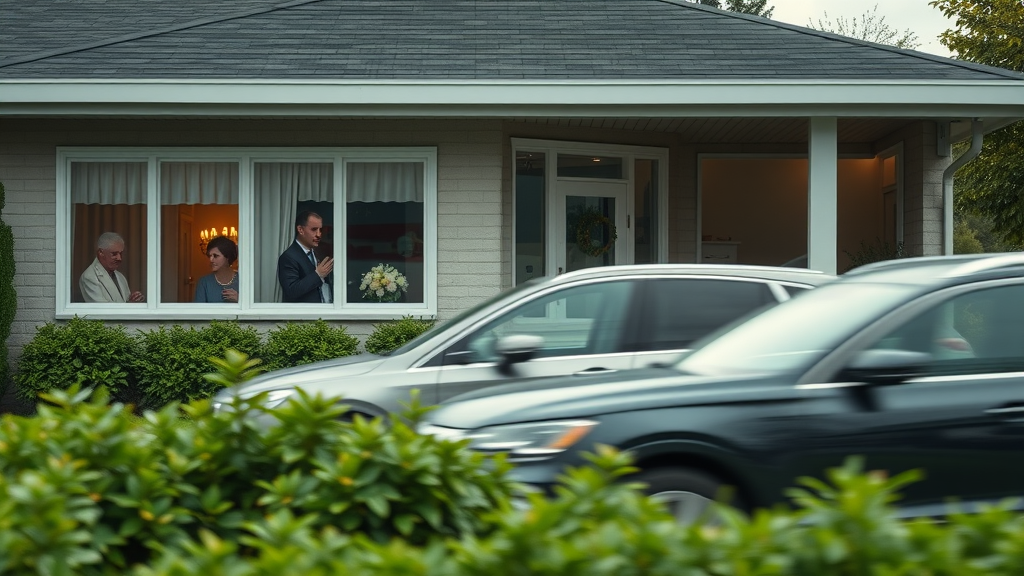
“Nearly 30% of Americans attended at least one drive by funeral during the pandemic—a testament to the rapid rise of this unusual tribute.”
As funeral homes continue to adapt, many are also focusing on supporting families in honoring their loved ones in meaningful ways, regardless of the format. For a closer look at how professionals help families create personalized tributes and navigate new traditions, you may find this resource on helping families honor their loved one especially insightful.
A New Ritual: What is a Drive By Funeral and Why Is It Spreading?
- Definition of a drive by funeral: A drive by funeral is a service where mourners pay their respects by driving slowly past the deceased's viewing area—often outside the funeral home or along a designated parade route—without exiting their vehicles.
- Comparison with traditional funeral home services: Unlike the indoor, communal settings found in most funeral homes , drive by funerals are designed for safety, speed, flexibility, and accessibility. Guests remain in their vehicles, greetings are often exchanged through open windows, and condolences are limited to a respectful wave or a simple nod.
- Origins of drive by funerals: While the concept gained popularity in response to health guidelines, it also echoes broader changes in American mourning, shaped by convenience and distance. Inspired partially by the fast food approach to drive throughs, these services allow more people to attend and pay their respects efficiently—even if they're only able to briefly participate.
This growing movement, featured in morning news segments and covered by the daily dot and other sources, reflects changing attitudes about public health, time management, and the importance of personalizing the journey of grief. As more people choose a drive by funeral, questions abound about how these new rituals will persist post-pandemic, and what role the funeral home will play in future memorials.
Understanding Drive By Funerals: Cultural, Social, and Practical Motivations
The widespread adoption of drive by funerals has roots in both necessity and culture. In many cities, public health mandates meant that traditional indoor gatherings at the funeral home or funeral chapel were prohibited. Families and funeral directors had to get creative, balancing the need to safely honor a deceased person with the desire for communal closure. Socially, drive by funerals resonate with Americans’ drive for efficiency—a theme that connects sadly to the rise of the “ fast food ” format in all walks of life.
On a deeper level, these services preserve the possibility for community expression, even in an age of remote meetings and news newsletters instead of face-to-face good news . Mourning rituals must adapt to global realities, and funeral homes have responded by facilitating ways for distant relatives and friends to express sympathy. The weekly good news or weekly good news newsletter some funeral homes create provides regular updates and memorials, keeping those who cannot attend a service in person more closely connected to the process of grieving.
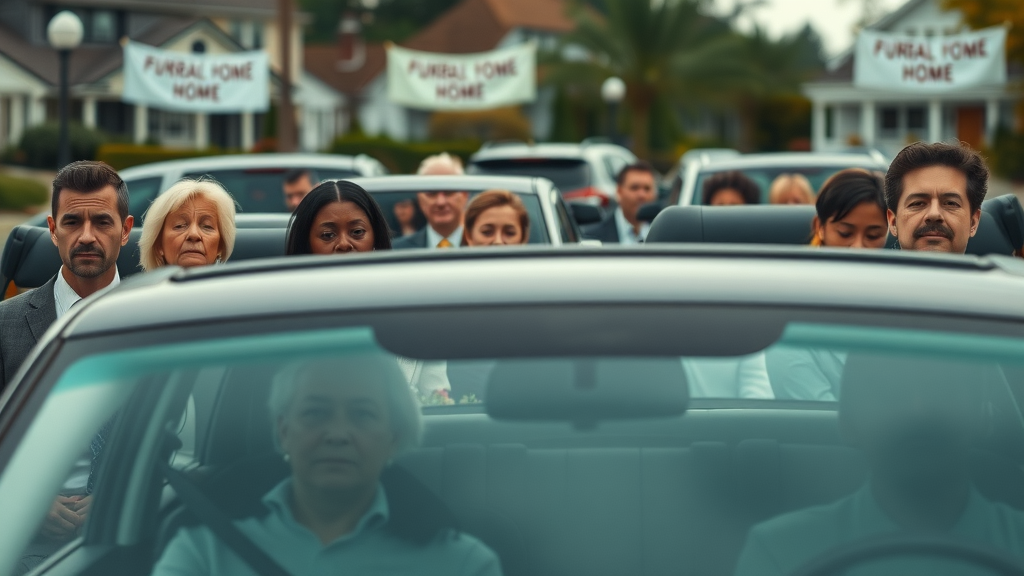
Funeral Homes and the Evolution of Grieving Practices
Funeral homes have always been at the forefront of mourning innovations—sometimes quietly, sometimes by necessity. From incorporating livestreams and digital guest books, to organizing safe, dignified drive by viewings, the funeral industry is undergoing its most rapid transformation since the advent of the modern funeral chapel. The presence of funeral home banners, elaborate floral arrangements, and staff guiding cars through the process ensures that the solemnity and respect of the occasion are never lost.
“Adapting to change is part of honoring the lives of our loved ones.” – Director, Local Funeral Homedeceased person
Funeral Homes vs. Fast Food: The Surprising Influence on Drive By Funerals
At first glance, comparing funeral homes to fast food chains can feel jarring, even disrespectful. Yet, the innovations in drive through services pioneered by the fast food industry have undoubtedly influenced the logistics and design of contemporary drive by funerals. The line of vehicles, precise choreography, and staff assisting each car recall the efficiency of a drive through, albeit for a vastly different purpose.
This analogy, commonly discussed in news newsletter columns and good news sites like the daily dot , begs a larger question about the “American way of death.” Are we sacrificing meaning for convenience, or simply adapting traditions to fit contemporary life? As with the paradise funeral chapel in cities like Vine Grove, where innovation is a necessity, the answer is often more nuanced than it first appears.
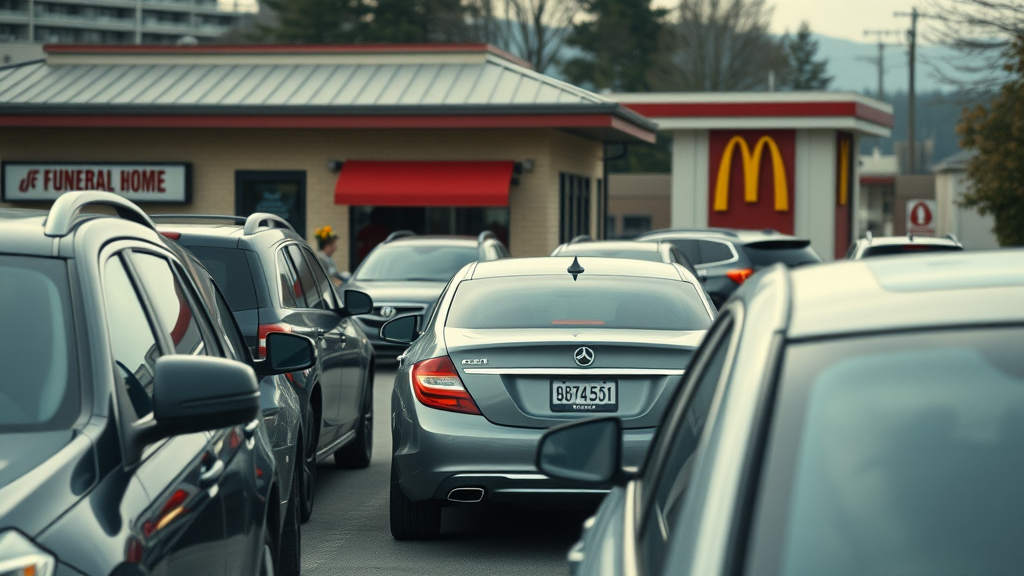
Is Drive By Mourning Inspired by Fast Food Convenience?
The influence of fast food is unmistakable in the design of some drive by funerals . Some funeral homes have even installed a dedicated “drive through” lane—sometimes shielded by discreet separation or even bulletproof glass , ensuring privacy and safety for all involved. Car after car, families move past, greeted by solemn funeral home staff and banked by floral tributes—each family participating in the ritual while still within the cocoon of their own vehicle.
Despite these similarities, the heart of a drive by funeral remains deeply rooted in respect, dignity, and community. The speed is a byproduct of necessity—not a trivialization of grief. Guests can still leave messages, drop off flowers, or even join a live stream provided by the funeral chapel.
| Feature | Traditional Funeral | Drive By Funeral |
|---|---|---|
| Duration | 1-3 hours | 15-30 minutes |
| Location | Inside funeral home | Outside/parade route |
| Attendance | Unlimited, indoor | Often limited, outdoor |
| Contact Level | High | Minimal (contactless) |
The Role of Funeral Homes in Drive By Funerals: Adaptation and Innovation
- How funeral homes facilitate drive by services: Funeral homes create drive by lanes, coordinate parking, and direct traffic, all while maintaining a dignified environment for family members and mourners to pay their respects.
- Logistics and planning compared to traditional funerals: Planning a drive by funeral is often more complex due to outdoor logistics, security, and timing. Funeral directors must balance safety, flow, and emotional needs, ensuring each family has a chance for meaningful closure without feeling rushed or overlooked.
- Community impact: The innovative approach taken by funeral homes has often strengthened community bonds. Through drive by funerals, even those who cannot attend a service under usual circumstances can participate safely—and often in larger numbers—than would be practical indoors.
Families increasingly see their local funeral home not just as a provider of services, but as a partner in adapting rituals to meet new needs. This adaptation promotes healing across cultural, religious, and generational divides.
Personal Reflections: Should We Embrace Drive By Funerals?
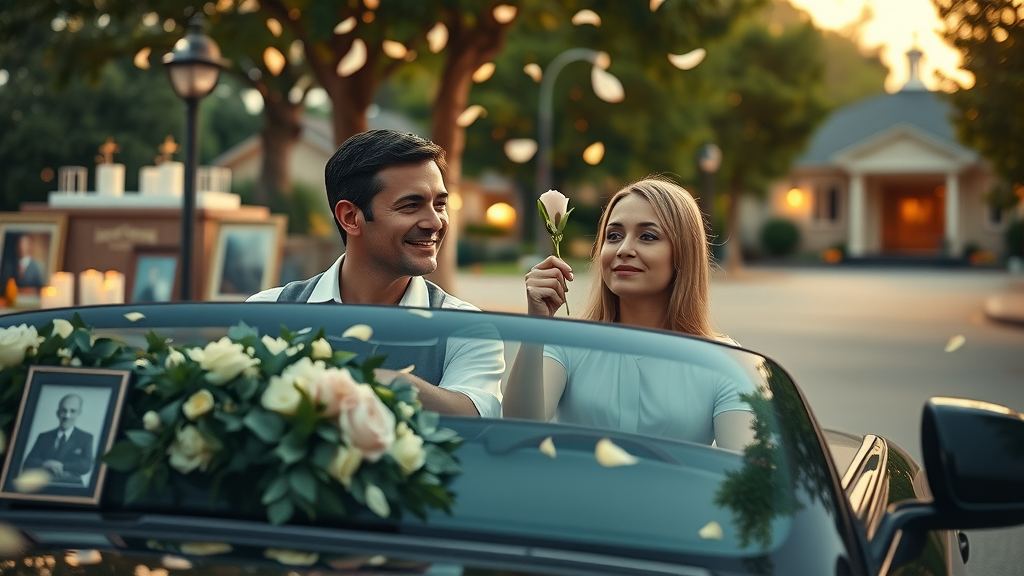
“A farewell should be meaningful, no matter the format.”
- Emotional pros and cons: Many families find drive by funerals bittersweet: The experience can feel less personal because of limited contact, but also more accessible for distant relatives and those with mobility issues. While the ritual is shorter, the symbolic gesture of ‘showing up’ maintains continuity with traditional values of respect and communal support.
- Stories of families who chose drive by funerals: In communities like Vine Grove—often covered by the morning news briefing or in “week delivered directly” news newsletters —families express gratitude for being able to gather safely and say goodbye, even if only from a car. These stories highlight the resilience of human connection and the willingness of funeral homes to innovate for the sake of healing.
Ultimately, as with all transitions in mourning ritual, some grieve what has been lost, while others focus on what has been gained—the chance to pay their respect despite unprecedented challenges, to honor a deceased person in a way that is relevant and accessible for the times.
Future Outlook: Will Drive By Funerals Outlast the Pandemic?
- Trends in funeral home services: Across America, funeral homes continue to explore drive by and hybrid event models, recognizing the lasting appeal of flexible, contactless services. Industry experts predict that even as indoor events return, the popularity of drive by funerals will persist for families valuing inclusivity and safety.
- Hybrid models in funeral homes post-pandemic: Looking to the future, many funeral chapel directors expect to offer both traditional and drive by services, sometimes blending indoor ceremonies with outdoor processionals for a “best of both worlds” approach. These hybrid models are likely to become another arrow in the quiver of the evolving funeral industry.
With each wave of innovation, funeral homes reaffirm their role as essential partners in both grief and celebration, helping families navigate change while upholding dignity.
Key Questions about Drive By Funerals
What is a funeral drive called?
A funeral drive is often referred to as a 'drive by funeral' or “drive through visitation,” denoting a unique format in which mourners pay respects without leaving their vehicles, coordinated by funeral homes .
What to do when a funeral procession drives by?
When a funeral procession drives by, it is customary to show respect by pausing, removing hats, and allowing the vehicles to proceed undisturbed—a protocol observed both in drive by funerals and traditional processions. This gesture maintains the solemnity owed to the deceased’s final journey.
How much do funeral homes charge to transport bodies?
Funeral homes typically charge between $300–$700 for local body transport, though rates may vary by state, distance, and the level of service required for drive by funerals or other formats. Some funeral homes may offer inclusive packages or additional services for longer distances.
What is the golden rule in funeral service?
The golden rule in funeral service—practiced by leading funeral homes —is to treat every family as they would wish their own to be treated, always prioritizing compassion and dignity. This ensures that all rituals, including drive by funerals, are managed with the utmost respect.
What You Need to Know When Considering a Drive By Funeral
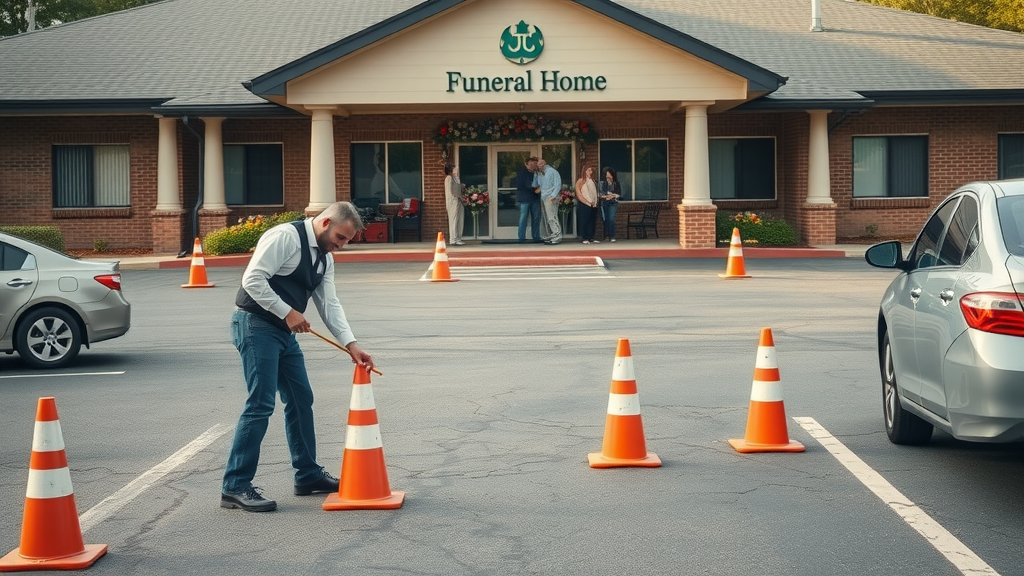
-
Checklist for arranging a drive by funeral with a funeral home:
- Contact your local funeral home to discuss options and availability.
- Plan the route and setup with staff, ensuring proper signage and traffic control.
- Arrange for flower deliveries, music, and personalized tributes that can be experienced from vehicles.
- Inform family and friends about timing, etiquette, and guestbook options (digital or physical).
- Legal and safety considerations: Check local regulations regarding outdoor gatherings and vehicle processions. Funeral homes are experienced in securing permits, arranging for police escorts if needed, and ensuring that safety protocols are followed for both guests and staff.
- How to personalize the experience: Many choose to decorate their cars, play favorite songs of the deceased, or drop off handwritten notes and mementos at designated stations. Funeral homes often offer creative ways to make the service meaningful, from curated playlists to memory walls accessible from the parade route.
Frequently Asked Questions on What is a Drive By Funeral
-
Are drive by funerals legal in all states?
Drive by funerals are legal in most states, but always check with your local funeral home to ensure compliance with regional ordinances and road safety protocols. -
Can funeral homes livestream drive by funerals?
Yes, many funeral homes offer livestream options for drive by funerals, allowing family members and friends from afar to participate virtually in the service. -
How do guests participate and leave messages?
Guests can wave, leave flowers, display messages on their cars, or sign digital guestbooks provided by the funeral home. Some families organize drive up message boards or memory boxes accessible from vehicles.
Reflecting on the Changing Relationship with Grief, Ritual, and the Funeral Home
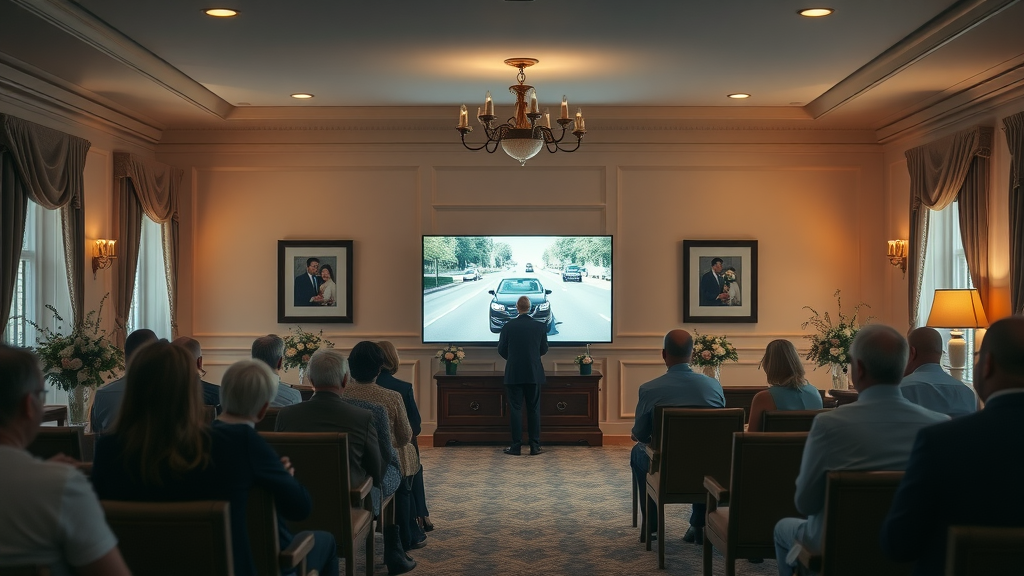
- Personal perspectives on the modern mourning process: For many, the presence of livestream screens inside the funeral home, combined with outdoor processions, brings a new sense of inclusion to grieving. Mourners can participate in the way that feels safest and most personal to them, regardless of distance, age, or health.
- The role of funeral homes in healing emotionally and socially: Funeral homes continue to act as emotional anchors, providing guidance, comfort, and technical support for families navigating the evolving landscape of modern grief. These institutions help maintain the compassion and community spirit that define our most meaningful rituals.
In a rapidly changing world, the relationship between mourning, ritual, and the funeral home is being reimagined in real time. Grief does not go away, but the support structures that surround it are growing more adaptable, resilient, and inclusive.
Exploring Deeper: Further Resources on Modern Funerals
- Recommended readings on changing funeral rituals and the American way of death.
- Links to leading funeral home associations for up-to-date guidelines and resources.
- Video discussions on how grief, ritual, and innovation intersect in the modern funeral industry (see below for a featured video).
Video Feature: The Drive By Funeral Experience (Video 2)
Watch as families and funeral home directors describe their experiences holding and organizing drive by funerals in response to recent health guidelines.
A documentary segment featuring interviews with funeral home directors, families, and footage of real drive by funeral services, highlighting adaptation, emotion, and logistics in a respectful and informative manner.
Key Points to Remember about What is a Drive By Funeral
- Drive by funerals offer a respectful, safe way to say goodbye that is reshaping the modern funeral home
- Funeral home services continue to adapt to meet evolving cultural needs
- Personalization and respect remain at the heart of all memorials
Your Thoughts on What is a Drive By Funeral: Is It the Future of Funeral Homes?
Share your experiences, views, and questions in the comments or reach out to your local funeral home to explore drive by funeral options for your family.
Ready to learn more or arrange a drive by service? Contact your local funeral home for guidance and support tailored to your family’s needs.
As you reflect on the evolving landscape of memorial traditions, consider how the core mission of honoring loved ones remains unchanged, even as the methods adapt. Exploring the ways families and funeral professionals collaborate to create meaningful goodbyes can offer deeper understanding and inspiration for your own journey. If you’re interested in discovering more about the compassionate support and innovative approaches available, take a moment to explore how families are being helped to honor their loved one . This perspective can provide valuable next steps and ideas for anyone seeking to navigate loss with dignity and care.
A drive-by funeral is a service where mourners pay their respects by driving slowly past the deceased’s viewing area—often outside the funeral home or along a designated route—without exiting their vehicles. This format allows attendees to remain in their cars, offering condolences through gestures like a wave or nod, ensuring safety and accessibility.
The concept gained prominence during the COVID-19 pandemic as a means to adhere to health guidelines while allowing communities to honor their loved ones. For instance, in Franklin County, Virginia, Stanfield Mortuary Service introduced drive-by viewings by placing the casket in a window, enabling people to view from outside. This approach was initially adopted for safety reasons but continued due to positive community reception. ( wdbj7.com )
Similarly, Clayton and McGirr Funeral Home in Freehold, New Jersey, held outdoor visitations where relatives and friends could drive past the casket and share condolences with the family. This method provided an opportunity for larger gatherings while maintaining safety protocols. ( nj1015.com )
The drive-by funeral format offers several benefits:
-
Safety : Minimizes physical contact, reducing the risk of disease transmission.
-
Accessibility : Allows individuals with mobility challenges to participate without leaving their vehicles.
-
Convenience : Accommodates larger numbers of mourners efficiently, especially when traditional indoor gatherings are restricted.
While drive-by funerals emerged out of necessity, their continued use reflects a shift in how communities approach mourning, blending tradition with innovation to meet contemporary needs.
 Add Row
Add Row 

 Add
Add 
Write A Comment